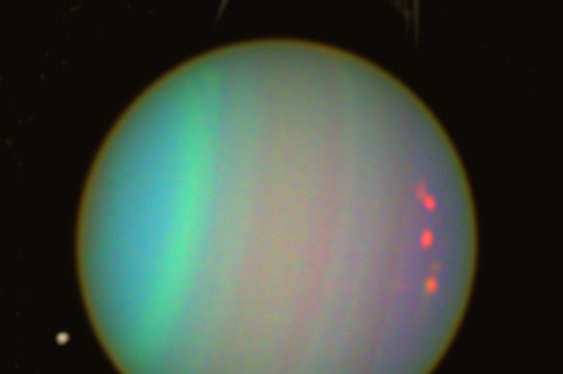
Scientists at NASA's Southwest Research Institute have identified the 29th natural satellite of Uranus using infrared technology from the James Webb Observatory.
The discovery was recorded on February 2, but an official announcement about it appeared only on Tuesday in a press release from the agency.
“The object was identified in a series of 10 40-minute long-exposure images taken with the near-infrared camera,” said Maryam El Mutamid, principal investigator for NASA's Solar System Science Division in Colorado.
“Although the moon is small, its discovery is of significant scientific value,” El-Mutamid said. “Even Voyager 2 failed to detect it during its close approach to the planet nearly four decades ago.”
According to experts' calculations, the diameter of the newly discovered celestial body is about 9.6 km, which explains the impossibility of its detection by previous missions and instruments.
The satellite is approximately 56,000 km from the core of Uranus, moving along a nearly perfect circular trajectory in the planet's equatorial zone.
As noted by the space agency, the ice giant has the smallest number of inner satellites among the planets in our solar system.
“Their complex interactions with ring structures point to a turbulent past that blurs the line between ring systems and moons,” said Matthew Tiscareno of the SETI Institute in California.
“The discovered object is significantly smaller and fainter in luminosity than known inner moons, suggesting the existence of more complex, unexplored features.”
The new cosmic body is yet to receive an official name from the International Astronomical Union.
Recall that in May, NASA researchers reported the probable presence of water oceans under the icy surfaces of Uranus's four largest moons.
Sourse: www.upi.com





